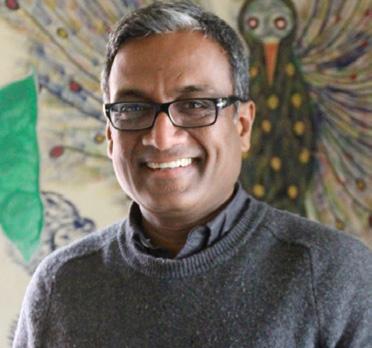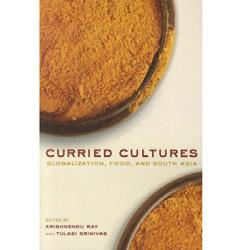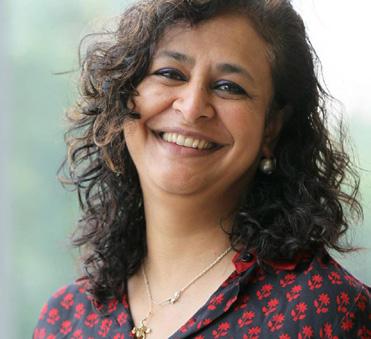
2 minute read
Curried cultures
from 2018-03 Melbourne
by Indian Link
Exploring the relationship between globalisation and South Asian cooking

Curried Cultures: Globalisation, Food and South Asia, Eds Krishnendu Ray and Tulasi Srinivas. Adelph Book Co, 2012

Istumbled upon this bookpublished a few years ago - whilebrowsing through bookshops in Bengaluru. The book explains the relationship between globalisation and South Asia seen through the lens of the region’s culinary traditions. The collection of essays uses food to comment on a range of cultural activities, and how South Asian cooking has changed the everyday world of urbanites everywhere from the colonial period to the contemporary era. South Asian foods have become staple in many parts of the world such as Chicken Tikka
Masala in the UK; Curry Raisu in Japan; chaat cafes in Berkeley and so on.
The book is a scholarly and serious study of what food does - and how it is shaped by - globalisation. Some of the articles are heavy reading, targeted more at a scholarly audience and full of sociological jargon; there are, however, some gems in there for the lay reader as well. The chapter on how the ubiquitous Udupi hotels sprang up first in the Madras Presidency and Bombay, was particularly fascinating. It is about how impoverished Shivalli Brahmins from a village called Shivalli near Udupi, in the periphery of the then Madras Presidency, spread out to different cities in India to make a living and emerged as successful food the magnificent but ethereal ruins of this once-great empire, reduced to rubble by the Deccan Sultanates after they defeated the Vijayanagar army in the battle of Talikota. During their six-month occupation, they sacked and systematically destroyed this once-proud and thriving cosmopolitan city, extolled by Italian and French travellers, and prominently identified in the European maps of the Middle Ages.
I digress. If you, however, expect to read an account of the glorious reign of KDR, his conquests, his temple-building, its scientific achievements, its marvellous architecture and sculptures - you will be disappointed. The book does not cater to those looking for a catalogue of Vijayanagar achievements from the great emperor’s mouth. Instead, its focus is almost exclusively on KDR’s pursuit of a beautiful dancer named Chinna Devi, with whom he becomes obsessed, and who becomes his second principal wife after he pursues and wins her over - spanning a few years.
It does, nevertheless, capture the zeitgeist of the era, the social and religious mores, KDR’s contemporaries, et al as Rangarajan has done his research fairly thoroughly. He has brought to life several of the people in KDR’s coterie, and they have an authentic ring to them. KDR’s mother, his long-suffering first wife Tirumala Devi, his able and loyal general Appaji, the head of the Vaishnava Mutt Thathayya, the bold and talented Gayatri etc, are memorable characters who leave their imprint on the empire in their own ways.
A must read for those interested in a sort of retelling of a chunk of Indian history.
CHITRA SUDARSHAN
entrepreneurs. What struck me as significant was how socio-religious customs shaped the business enterprise of a whole community. Shivalli Brahmin boys and men learnt to cook from a young age as only the food they cooked could be offered as prasad in their homes. When these young men left home for cities like the then Madras and Bombay in search of a livelihood, the only skill they had was cooking, and they put it to use by working in kitchens, and many succeeded in buying the outlets of their employers or setting up their own hotels.
From the famous Dasaprakash and Woodlands in Chennai to your lowly neighbourhood ‘Udupi hotels’, this is a most fascinating tale.
CHITRA SUDARSHAN









